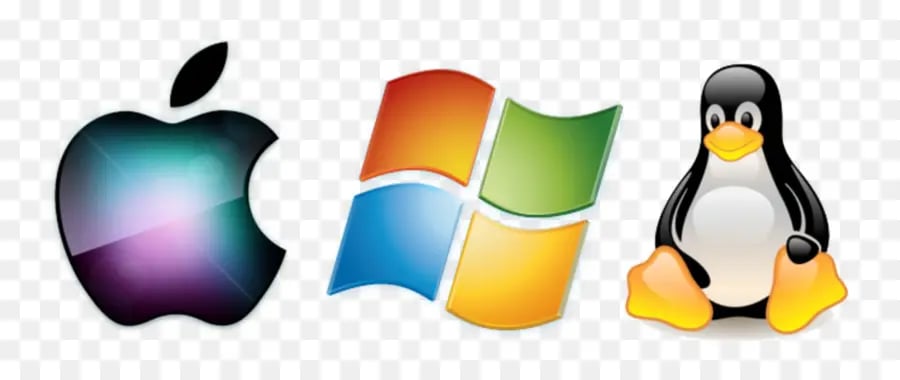
Now we talk about Operating systems
OS information if you ever need to see what would be right for you.
1/4/20253 min read


Operating Systems for Computers and Laptops
1. Windows
Facts:
Most popular desktop OS globally (~75% market share).
Available in multiple versions (e.g., Home, Pro, Enterprise).
Compatible with a vast array of hardware and software.
Frequent updates can introduce new features and security patches.
Used extensively in business, gaming, and general consumer markets.
Strengths:
High compatibility with third-party software and hardware.
Excellent gaming support with DirectX.
Large community support for troubleshooting.
User-friendly for beginners and advanced users.
Strong enterprise tools like Active Directory and Azure integration.
Weaknesses:
Frequent security vulnerabilities due to its popularity.
Some versions can be resource-heavy.
Fragmentation in versions (Windows 10, 11, etc.) can confuse users.
Licensing costs.
Security Features:
Windows Defender offers real-time protection.
BitLocker for disk encryption (Pro versions).
Frequent updates addressing vulnerabilities.
User-Friendliness: High, but new updates (like Windows 11’s interface) may require adjustment.
2. macOS
Facts:
Exclusive to Apple hardware (MacBooks, iMacs).
Focuses on a seamless ecosystem with iOS devices.
Built on Unix, offering strong security foundations.
Pre-installed software optimized for creativity (e.g., iMovie, GarageBand).
Expensive hardware limits accessibility.
Strengths:
Smooth integration with other Apple devices.
Reliable performance with optimized hardware-software synergy.
Excellent for creative professionals (graphics, video editing).
Fewer security threats compared to Windows.
Weaknesses:
Limited hardware choices and expensive upgrades.
Not ideal for gaming due to limited game support.
Closed ecosystem restricts customization.
Lack of native support for some specialized software.
Security Features:
Gatekeeper restricts unverified apps.
FileVault for full-disk encryption.
Regular updates to combat vulnerabilities.
User-Friendliness: Very high, especially for Apple users; intuitive design.
3. Linux
Facts:
Open-source and highly customizable.
Comes in multiple distributions (e.g., Ubuntu, Fedora, Arch).
Primarily used in servers, development, and cybersecurity.
Free to use, with large community support.
Requires a learning curve for beginners.
Strengths:
Highly secure and resistant to malware.
Flexible for development, servers, and advanced users.
Lightweight distributions available for older hardware.
No licensing costs.
Weaknesses:
Limited compatibility with commercial software and games.
Steeper learning curve for non-technical users.
Hardware compatibility can vary (driver issues).
Fragmentation among distributions can confuse users.
Security Features:
Built-in firewalls like iptables.
SELinux for access control.
Frequent patches and updates from an active community.
User-Friendliness: Low to moderate, depending on the distribution.
Operating Systems for Phones
1. Android
Facts:
Dominates the global smartphone market (~70% share).
Open-source and customizable by manufacturers.
Offers a wide range of devices at different price points.
Regular updates are manufacturer-dependent.
Google services are deeply integrated.
Strengths:
Broad hardware options and price points.
Extensive app availability via Google Play Store.
Highly customizable (widgets, themes, ROMs).
Supports expandable storage and USB-C peripherals.
Weaknesses:
Fragmentation in OS versions leads to inconsistent user experiences.
Security can vary across manufacturers and models.
Pre-installed bloatware on some devices.
Slower updates for non-Google devices.
Security Features:
Google Play Protect scans apps for malware.
Encryption and biometric authentication support.
Regular security updates for newer devices.
User-Friendliness: High, though customization may overwhelm some users.
2. iOS
Facts:
Exclusive to Apple devices (iPhone, iPad).
Focused on simplicity and user experience.
Closed ecosystem limits third-party integrations.
Regular and timely software updates for all supported devices.
Strong emphasis on privacy and security.
Strengths:
Excellent app optimization.
Timely updates for all devices.
Strong ecosystem integration (Mac, iPad, Watch).
Privacy-focused (app tracking transparency).
Weaknesses:
Limited customization compared to Android.
Expensive hardware.
Closed ecosystem restricts flexibility.
Limited compatibility with non-Apple peripherals.
Security Features:
Face ID and Touch ID.
Encrypted iMessages and FaceTime.
App Store has strict app vetting processes.
User-Friendliness: Very high; intuitive interface with minimal setup.
Commonalities and Differences
Common OS Features:
All major OSes focus on providing regular security updates.
User interface (UI) designs aim for simplicity, though user preferences vary.
App ecosystems are crucial for both mobile and desktop platforms.
Key Differences:
Popularity: Windows dominates desktops; Android leads phones.
Security: Linux and iOS are inherently secure but differ in approach.
Customization: Linux and Android excel in flexibility, macOS and iOS in simplicity.
User Base: macOS and iOS appeal to a premium audience; Windows and Android cater to all price points.
User-Friendliness:
Windows and Android are widely regarded as user-friendly due to their ubiquity.
macOS and iOS prioritize simplicity over customization.
Linux offers steep learning but is rewarding for tech-savvy users.
Conclusion
Each OS caters to different needs:
Windows for versatility and gaming.
macOS for creativity and Apple enthusiasts.
Linux for tech professionals and privacy advocates.
Android for flexibility and affordability.
iOS for a premium, privacy-focused experience.
This balance of strengths and weaknesses ensures that there’s an OS suited for everyone.
